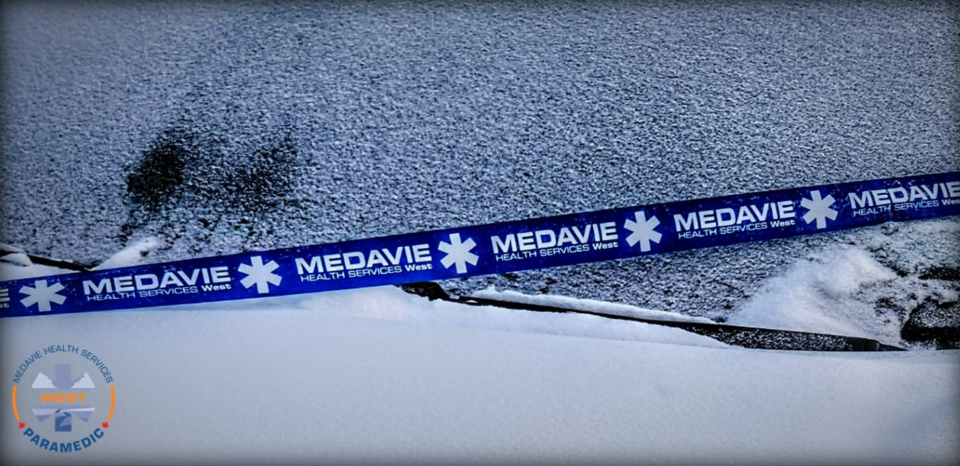Medavie Health Services West, which operates Emergency Medical Services (EMS) ambulance response in Saskatchewan, is piloting a program which will put blue tape on vehicles that have already had an emergency response — hopefully preventing repeat calls.
“With our increased call volumes and demands on paramedics, responding to false calls, or calls that don’t require an ambulance had an impact on our ability to respond to actual emergency calls,” said Troy Davies, spokesperson for MHS West, in a release announcing the program. “Our colleagues in Nova Scotia launched a similar program like this in 2018 and we have adopted this for our EMS services in Saskatoon, Moose Jaw, and Lloydminster.”
Kyle Sereda, Chief of Moose Jaw & District EMS Paramedic Services, explained that paramedics often visit the same incident scene several times, wasting valuable resources.
“We’ve gone out to the same accidents five, six times, because when someone calls 911 … we don’t know anything more than that the caller drove by and saw a car in the ditch,” he said. “The blue tape program is the attempt, when we leave that scene, to wrap tape visibly on the outside.”
Each ambulance in Moose Jaw now carries the blue tape. If responders have time, they can mark the scene and indicate that emergency services have been on site and have already transported any patients involved.
The tape serves two functions. First, during the 911 call itself operators can ask if EMS blue tape is visible. This helps when callers may not be educated on what the blue tape means.
Second, as the public becomes more familiar with the program, potential 911 callers may see the tape first and realize a 911 call isn’t necessary.
“If an individual knows about our blue tape program, they’ll drive by and see that and go, ‘OK, no problem, someone’s been there, no need to call 911,’” Sereda said. “Many times our challenges are in really bad weather, and emergency services are taking risks way out in these situations, especially more than once and especially if it’s unnecessary.
“Because we can’t decline. If somebody phones 911, we don’t say, ‘No, we think that’s the same accident.’ Because sometimes it is and sometimes it isn’t. So, unless we know for sure, we still respond.”
Sereda said that although the Blue Tape Program is labelled as a pilot, it will almost certainly continue indefinitely. The program pilot is intended as an introductory period to educate the public and help raise awareness.
MHS West stated in its release that when in doubt about whether to call emergency services, members of the public should do the safe thing and call.
“Knowing when to call an ambulance can help our current call volumes,” Davies said, “but if in doubt on whether you should call or not, always make the call!”




